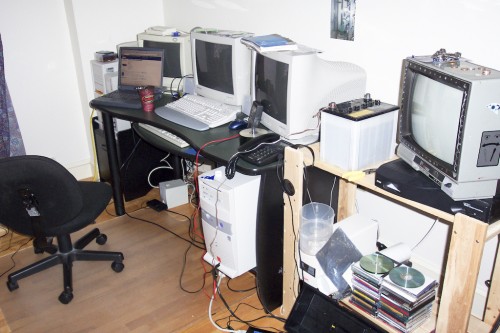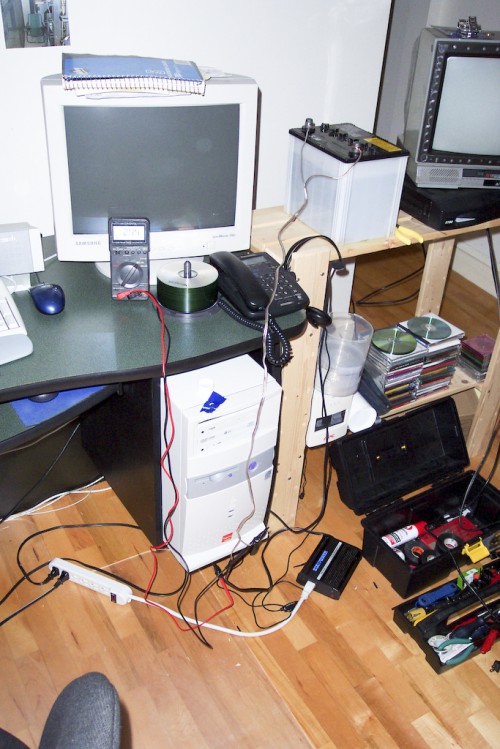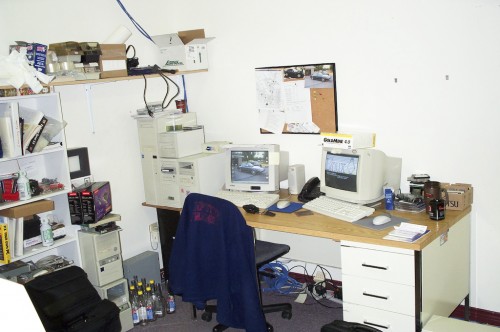I acquired my little Sun Ultra 5 in 2003 for $100 from the asset auction of a dead .com company. I didn’t really realize it at the time but I got a pretty good deal, the system was in mint shape and looked as if it had never been used.
Over the years I’ve played with Solaris on it and various *nix sparc ports. It’s served as a desktop machine and a server for me and always worked well. Last January my group did their annual storage room cleanout where we go through our storage area and recycle all the equipment and parts that are just taking up space. One such item was a Sun Ultra 10 with a bad CPU module and no nvram.
I grabbed it from the recycling pile and took it home to see if there was any memory in it that would work with my Ultra 5. Luckily for me, there was 1GB of ram installed! The only problem is it was full height memory which interfered with the floppy mount in my ultra 5.
So I stripped both systems down to the bare components. I put my ultra 5 motherboard and cpu into the Ultra 10 chassis. Then I took the memory, SCSI card, and Elite 3D framebuffer from the old Ultra 10 and a 73gb 10K rpm scsi disk and DVD-Rom I had from an old pc and put them all into the Ultra 10. The old leftover parts went back to the computer recyclers, where all electronics waste should be (not in the garbage!).
So here are the specs of the new machine:
System Configuration: Sun Microsystems sun4u Sun Ultra 5/10 UPA/PCI (UltraSPARC-IIi 400MHz)
System clock frequency: 100 MHz
Memory size: 1024 Megabytes
========================= CPUs =========================
Run Ecache CPU CPU
Brd CPU Module MHz MB Impl. Mask
--- --- ------- ----- ------ ------ ----
0 0 0 400 2.0 12 9.1
========================= IO Cards =========================
Bus# Freq
Brd Type MHz Slot Name Model
--- ---- ---- ---- -------------------------------- ----------------------
0 PCI-1 33 1 ebus
0 PCI-1 33 1 network-SUNW,hme
0 PCI-1 33 2 SUNW,m64B ATY,GT-C
0 PCI-1 33 3 ide-pci1095,646.1095.646.3
0 PCI-2 33 4 scsi-glm Symbios,53C875
No failures found in System
===========================
========================= HW Revisions =========================
ASIC Revisions:
---------------
Cheerio: ebus Rev 1
System PROM revisions:
----------------------
OBP 3.31.0 2001/07/25 20:36 POST 3.1.0 2000/06/27 13:56
It’s like a new machine! Solaris 9 is pretty responsive on it, the addition of a SCSI drive to replace the slow IDE made a big difference. Now that’s true computer recycling!



